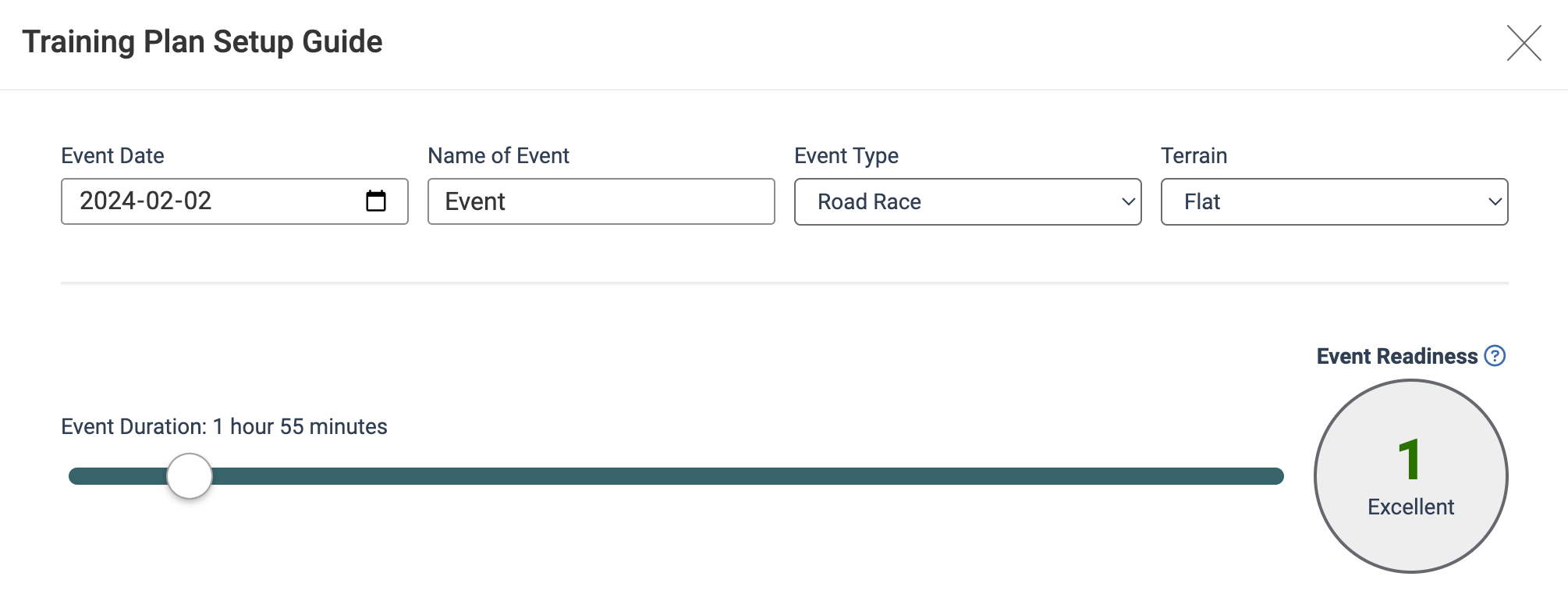
Being ready to complete an event has different meaning to different people depending on their overall goal. Some athletes want to be ready to win whereas others will want to be ready to just finish the event.
In Xert terms, how ready you are for an event depends on your training status and the demands of the event. Having greater readiness means that you can perform the event and suffer less degradation in performance during the event. Your durability to perform the event is higher when you have better readiness. For example, an athlete that has a 1 star training status (i.e. training roughly 3 hours per week) could complete a 8 hour event but they would reach a far higher level of event tiredness than an athlete that has a 5 star training status (i.e. training roughly 17.5 hours per week). Even if both athletes had the exact same fitness signature (power curve), the athlete with the higher training status is more ready for the event and will experience far less tiredness and fatigue both during and after the event.
Xert calculates Event Readiness at 5 levels:
Level |
Description |
1 |
Your readiness is Excellent and you’ll experience little fading performance during the event as well as not feeling very tired after the event. Your durability is very high and you’ll be fresh enough to race again the next day. This level is ideal for athletes that perform stage races or for athletes aiming to be at their very best for one-day races. |
2 |
Your readiness is Good and you’ll experience some fading performance during the event as well as feeling tired after the event. Your durability is strong and you’ll be fresh enough to race again in a couple of days after the event. This level is ideal for athletes that are looking to optimize performance for a single day event without having to invest in a lot of weekly training hours. |
3 |
Your readiness is Fair and you’ll experience fading performance during the event as well as feeling very tired after the event. Your durability is fair and you’ll be fresh enough to race again in about 3 of days of rest after the event. This level is ideal for athletes that are looking to perform well at the event while minimizing the time needed to prepare for it. |
4 |
Your readiness is Poor and you’ll experience a high-degree of fading performance during the event as well as feeling extremely tired after the event. Your durability is poor and you’ll be fresh enough to race again with about 4 days of rest afterwards. This level is ok for athletes that are looking to get through the event with the least amount of preparation involved, either due to schedule constraints or the event is too close to enable enough of an increase in training loads. |
5 |
You will not be ready for this event. The demands of this event are outside what you are capable of preparing for and should be avoided. The combination of the demands of the event, your current training status, the training status needed for the event and the amount of time you have to prepare for it make it unlikely you’ll be prepared enough to complete this event without considerable distress and overall fatigue. |
Advanced Conceptualization Example
Imagine two cyclists, Cyclist A and B, both have the same fitness signature (i.e. the same power curve) and the same weight. Cyclist A is an accomplished cyclist and has been training all spring whereas Cyclist B is a talented junior that hasn’t yet had an opportunity to build up a lot of fitness. This would mean that if they both climbed a hill at the start of a race that was 5 minutes long, they could both ride it at the exact same pace and finish together (assuming the rode side-by-side all else being equal). But lets say they had to climb this hill many times during an event and at increasing levels of tiredness and fatigue. which of the two would be more ready to compete at this event? Answer: Cyclist A. Cyclist A would conceivably have greater training loads than Cyclist B. Say Cyclist A has been doing 5 minute hill repeats over and over and has a High Training Load of 15 and Peak Training Load of 5. Cyclist B hasn’t had an opportunity to do much at all except for some base training and has a High Training Load of 2 and Peak Training Load of 0.5. Cyclist A, by virtue of having done more hill repeats (and thus why their Training Loads are higher) would have greater durability for this event and would outperform Cyclist B who would not last as long as Cyclist A during the event. Cyclist A may not feel fatigue during the event and may recover in a day or two. Cyclist B will be trashed during the race and will need many days to recover back to form.